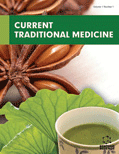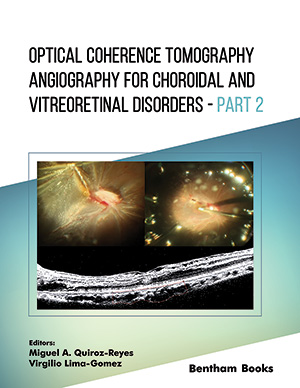Abstract
One of the most common causes of joint pain and impairment is osteoarthritis. Osteoarthritis is a condition that affects people all over the world. Osteoarthritis is the second most prevalent and commonly diagnosed rheumatologic disease in India, with a prevalence of 22 to 39 %. Prior to the discovery of extraction and synthetic chemistry, musculoskeletal diseases were treated using medicinal plant compositions. When non-pharmacological therapy is insufficient, a variety of pharmacological therapies can be used to treat arthritis. Synthetic medication therapy, on the other hand, may have undesirable side effects and be expensive. As a result, researchers have been looking at alternative therapies. Herbal drugs have demonstrated the ability to control arthritis in a safe and effective manner. In this review, the safety and efficacy of traditionally used plants and their main chemical constituents to treat osteoarthritis are reported. After reviewing online databases, we found herbs used to treat osteoarthritis, such as Boswellia serrata, Alpinia galanga, Commiphora wightii, Harpagophytum procumbens, Salix alba, Ribes nigrum L., Filipendula ulmaria, Curcuma longa, Zingiber officinale, Capsicum annum, Urtica dioica L., Vitex negundo L., Syzygium aromaticum L. and Allium sativum L. These species are attributed with antioxidant and antiinflammatory properties, which help to reduce inflammation and tissue damage. The efficacy and safety of herbal medications for osteoarthritis symptoms are discussed here.
Keywords: Osteoarthritis, treatment with herbs, chemical constituents, mechanism of action, medical herbs, joint, disease.
[http://dx.doi.org/10.1016/j.mpmed.2009.11.008]
[http://dx.doi.org/10.1136/pmj.79.933.377] [PMID: 12897215]
[http://dx.doi.org/10.1038/nrrheum.2016.65] [PMID: 27192932]
[http://dx.doi.org/10.4103/0019-5413.189608] [PMID: 27746495]
[http://dx.doi.org/10.1016/j.berh.2018.08.006] [PMID: 30509409]
[http://dx.doi.org/10.1177/2047487315610663] [PMID: 26464295]
[http://dx.doi.org/10.1038/srep39672] [PMID: 28004796]
[http://dx.doi.org/10.1016/j.semarthrit.2016.04.002] [PMID: 27179749]
[http://dx.doi.org/10.1016/j.joca.2016.10.027] [PMID: 28300652]
[PMID: 1724464]
[http://dx.doi.org/10.1002/art.1780380204] [PMID: 7848306]
[http://dx.doi.org/10.1007/s11926-012-0288-9] [PMID: 22987043]
[http://dx.doi.org/10.2165/11586800-000000000-00000] [PMID: 21553931]
[PMID: 24848732]
[http://dx.doi.org/10.1161/ATVBAHA.107.155606] [PMID: 18032778]
[http://dx.doi.org/10.1016/j.phymed.2014.02.001] [PMID: 24667331]
[http://dx.doi.org/10.7150/ijms.8.615] [PMID: 22022214]
[http://dx.doi.org/10.1186/s12906-017-2062-z] [PMID: 29316908]
[http://dx.doi.org/10.4103/2229-5186.90890]
[http://dx.doi.org/10.1074/jbc.M408093200] [PMID: 15322087]
[PMID: 21485714]
[http://dx.doi.org/10.1016/S0031-9422(02)00388-6] [PMID: 12482459]
[http://dx.doi.org/10.1016/S0031-9422(00)00485-4] [PMID: 11314959]
[http://dx.doi.org/10.1177/1759720X11436238] [PMID: 22850529]
[http://dx.doi.org/10.1016/S0944-7113(00)80001-X] [PMID: 11185727]
[http://dx.doi.org/10.1055/a-1007-5206] [PMID: 31604354]
[PMID: 15517622]
[http://dx.doi.org/10.1039/c2fo30058c] [PMID: 22673662]
[http://dx.doi.org/10.4236/ojra.2015.54018]
[http://dx.doi.org/10.1111/1750-3841.14781] [PMID: 31454085]
[http://dx.doi.org/10.1002/ptr.4753] [PMID: 22711544]
[PMID: 21717043]
[http://dx.doi.org/10.1186/s13075-019-1960-5] [PMID: 31351488]
[http://dx.doi.org/10.1093/ecam/neh117] [PMID: 16136208]
[http://dx.doi.org/10.1186/1471-2210-6-12] [PMID: 17010215]
[http://dx.doi.org/10.1038/39807] [PMID: 9349813]
[http://dx.doi.org/10.1177/1756285613501576] [PMID: 24409200]
[PMID: 26109991]
[PMID: 10606356]
[http://dx.doi.org/10.1111/j.1398-9995.2007.01393.x] [PMID: 17521313]
[http://dx.doi.org/10.1016/j.phyplu.2021.100205]
[http://dx.doi.org/10.3136/fstr.23.385]
[http://dx.doi.org/10.1016/j.fct.2007.09.106] [PMID: 17996351]
[http://dx.doi.org/10.1111/1541-4337.12179] [PMID: 33371581]
[http://dx.doi.org/10.1080/13880209.2017.1314513] [PMID: 28407719]
[http://dx.doi.org/10.22159/ijap.2019.v11s5.T0081]
[http://dx.doi.org/10.1007/s13596-018-0335-9]
[http://dx.doi.org/10.1196/annals.1329.054] [PMID: 15659827]
[http://dx.doi.org/10.3390/biom10020202] [PMID: 32019140]
[http://dx.doi.org/10.5455/jice.20150313021918] [PMID: 26401403]
[http://dx.doi.org/10.1093/jn/133.7.2171] [PMID: 12840173]
[http://dx.doi.org/10.33263/BRIAC114.1210412119]
[http://dx.doi.org/10.1016/j.joca.2008.05.010] [PMID: 18573668]
[http://dx.doi.org/10.1002/mnfr.201601013] [PMID: 28371322]
[http://dx.doi.org/10.1186/1471-2474-11-280] [PMID: 21143861]
[http://dx.doi.org/10.1023/B:CBTO.0000038463.55930.79] [PMID: 15499972]
[http://dx.doi.org/10.1016/B978-0-12-813820-5.00014-3]






























